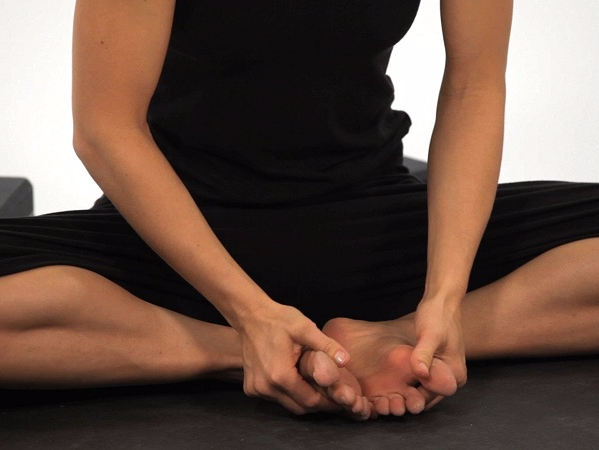Yoga for Arthritis

Sedentary lifestyle, overweight, lack of exercise and stress are a few causes that leads to arthritis. Yoga one of the ancient science is a safest and effective way to indulge in physical activity which also has an essential psychological benefit. Lots of researches have been conducted to prove the fact that yoga is not mere exercise but has potential benefits on both physical and mental health. Yoga not just increases muscle and bone strength but it also improves flexibility, boosts respiratory endurance, and promotes a complete balance. With the help of Yoga lots of body aches and pain can be kept at bay. Yoga enhances mental stability, physical endurance and surges positive energy.
Here are a few asanas that help in Arthritis.
Shitilikaran
To begin with, warm up or loosening practice or Shitilikaran/ Sukshma vyayama is very important to remove the lethargy and tiredness of the body. This practice loosens various joints of the body and improves flexibility of the spine by strengthening the muscles. This will include neck rotation, shoulder rotation, wrist rotation, hip rotation, and knee rotation, ankle rotation all in clockwise and anti-clockwise direction. Repeat each for 10 times and remember to stand straight and keep your mind relaxed and breathing rhythmic.
Trikonasana
Stand up straight and spread your legs about a meter apart. Turn one foot outwards such that your toes are facing sideways and turn your other foot slightly inwards. Now, stretch your arms sideways. Bend at your hips and lower one arm towards the outward turned leg while allowing the other arm to rise up towards the sky. Make sure you distribute your body weight equally on both your legs. Now, breathe out when you bend down. Place your arm either on your ankle, shin or knee and if you are extremely flexible, try to touch the floor with your palm. Breathe in and out softly and allow your body to relax. Make sure your hips are straight and you are not bending backwards or forwards. Hold this pose for five breath counts. Now, exhale and come up to the standing position. Repeat this asana on the other side. Do not push yourself too much while doing this pose; take your time to gain flexibility.
Benefits: strengthens your legs, knees, ankles and chest. It also helps improve digestion and metabolism. Corrects the spinal curvature and corrects flat foot.
Vrikshasana
Stand tall and straight with arms by the side of your body. Bend your right knee and place the right foot high up on your left thigh. The sole of the foot should be placed flat and firmly near the root of the thigh. Make sure your left leg is straight. Find your balance by fixing your eyes on the distant object in front, a steady gaze helps maintain a steady balance.. After balancing, take a deep breath in, slowly raise your arms over your head from the side, and bring your palms together in Namaskara mudra. Confirm that your spine is straight. Your entire body should be extended, like a stretched elastic band. Breathe deeply and relax. With slow exhalation, gently bring down your hands from the sides. You may gently release the right leg. Repeat this pose with the left leg off the ground on the right thigh.
Benefits: It stretches the legs, back and arms, and revitalizes you. It brings balance and equilibrium to mind and improves concentration. It opens hips and relieve sciatica problem.
Gomukhasana
Sit erect on the ground with your legs stretched out in front of you. Now gently bend your left leg, and place it under your right buttock. Fold your right leg and place it over your left thigh. Place both your knees close together as they are stacked one on top of the other. Gently fold your left arm and place it behind your back. Take your right arm over your right shoulder, and stretch it as much as you can until it reaches your left hand. With practice, you will be able to not just reach, but also catch your left hand. Keep your trunk erect, expand your chest, and lean slightly back. Hold this pose for five breathe count. Repeat the same with the other side.
Benefits: The muscles of the lower back, buttocks and the knees are properly stretched thus Gomukhasana is beneficial in backache, sciatica and rheumatism. This asana helps to flex the back, making it more elastic. It helps to cure stiff shoulders, neck and also helps reduce backaches. Practicing this asana regularly can reduce stress and anxiety.
Marjariasana
Come to Vajrasana, lean forward and place the hands flat on the floor in line with the shoulders with fingers pointing forward. Arms, thighs and heels should be about a shoulder wide apart. The arms and thighs have to be placed perpendicular to the floor. Now inhale rise the head and look at the ceiling while depressing the spine making it concave. While exhaling arch the spine upwards and bend the head downward bringing the chin towards the chest. This constitutes one round of Marjariasana. Repeat for 5 to 10 rounds.
Benefits: Brings flexibility to the spine. Strengthens wrists and shoulders and tones the abdomen, improves digestion. Relaxes the mind and improves blood circulation.
Baddakonasana
Sit in the Dandasana (Staff Pose). Bend your knees and join the soles of your feet. Now hold your feet or ankles. Move your heels to the groin as so much as possible. Breathe out and let down your knees to the ground. Relax your arms and shoulders. Now press the sitting bones within the floor and let the crown of your head pointing towards ceiling to elongate the spine. Press the sitting bones in the floor and let the crown of the head point to the ceiling to lengthen the spine. Assume that your knees moving like the wings of the butterfly. Hold this Pose for up to 2 minutes. After that return in Dandasana and relax.
Benefits: It stretches groin and inner thighs, increases the flexibility of knees, ankles, feet and hips, opens pelvic region. Cut down the tension from the groin part and gap up the hips and inner thighs and useful in relieving pain in lumbar region.
Setubandhasana
Lie flat on your yoga mat, with your feet flat on the floor. Now exhale and push up, and off the floor with your feet. Raise your body up such that your neck and head are flat on the mat and the rest of your body is in the air. You can use your hands to push down for added support. If you are flexible you can even clasp your fingers just below your raised back for that added stretch. The key here is never over exert or hurt your-self while doing this pose.
Benefits: Good for your spine and hip joints. It also helps relieve pain, stiffness and discomfort in these regions and helps resolve any disorders associated with the neck, arms and palms. This pose also helps keep your blood pressure under control, helps to relax the mind and improves digestion.
Shavasana
It is as simple as lying down with your palms facing the ceiling. You need to just breathe slowly and deeply and relax each and every part of the body starting from toe to head. Chant ‘OM’ after complete relaxation.
Benefits: Relives stress of the body and mind. Relaxes entire nervous system and rejuvenates the body.
The above mentioned yoga postures are beneficial in avoiding arthritis problem. Get trained from a professional yoga instructor and then start the practice. If your arthritis problem is severe then please consult your doctor and then start the asanas. Never over strain your joints in order to attain a perfect posture. Regular yoga practise will keep your joints healthy and also your flexibility will improve in a course of time.



 Please expect a free call back
Please expect a free call back






Leave a comment